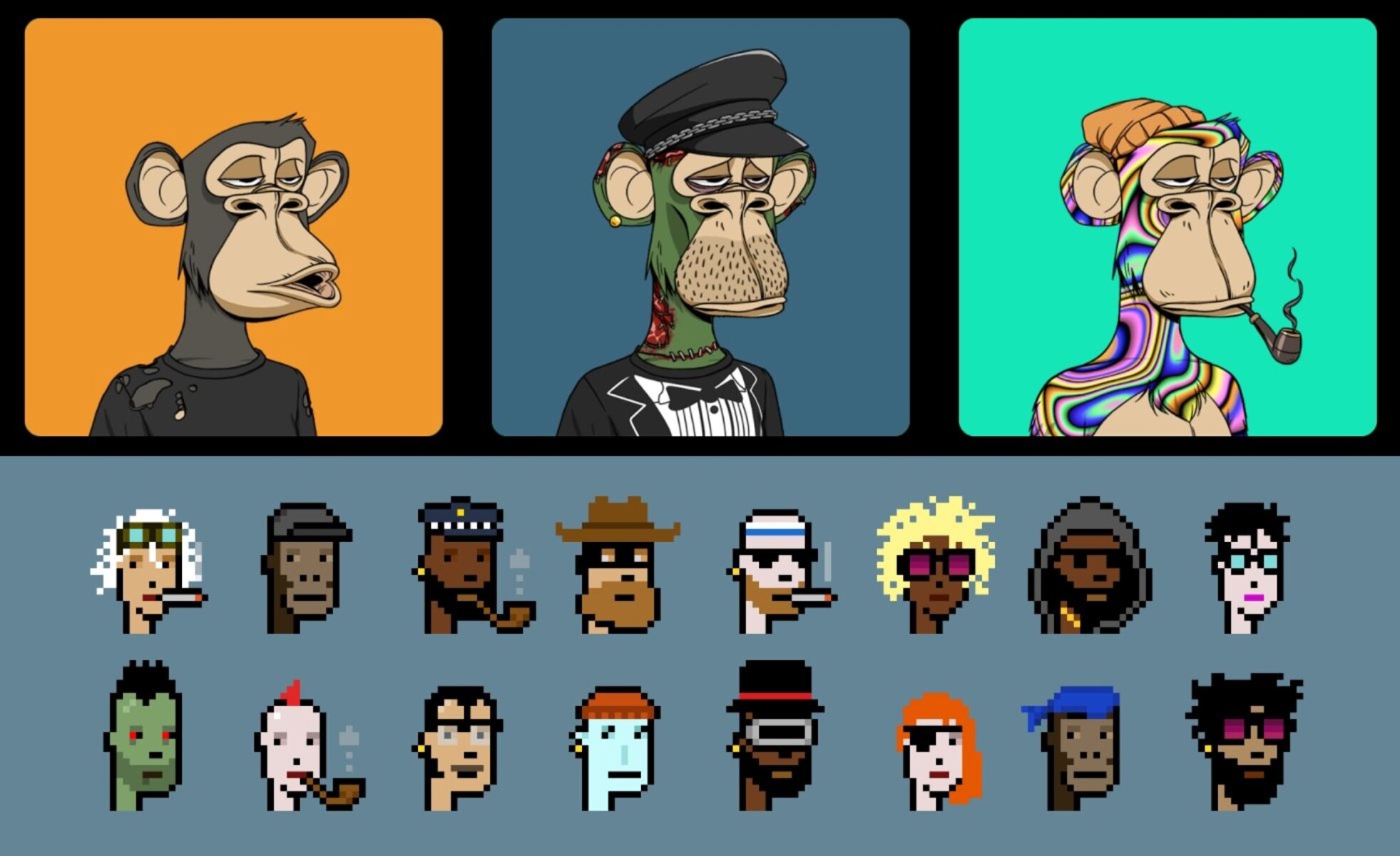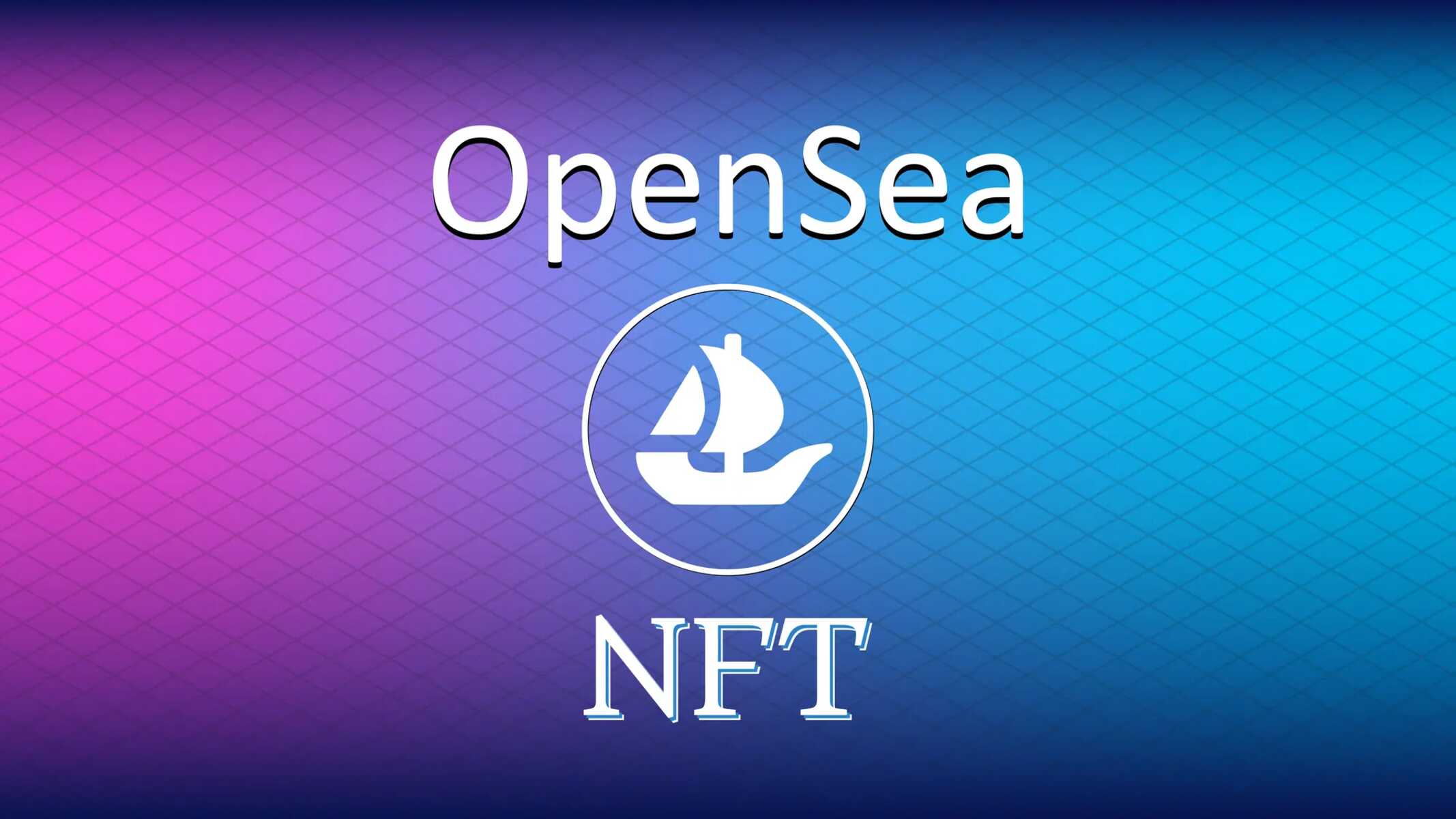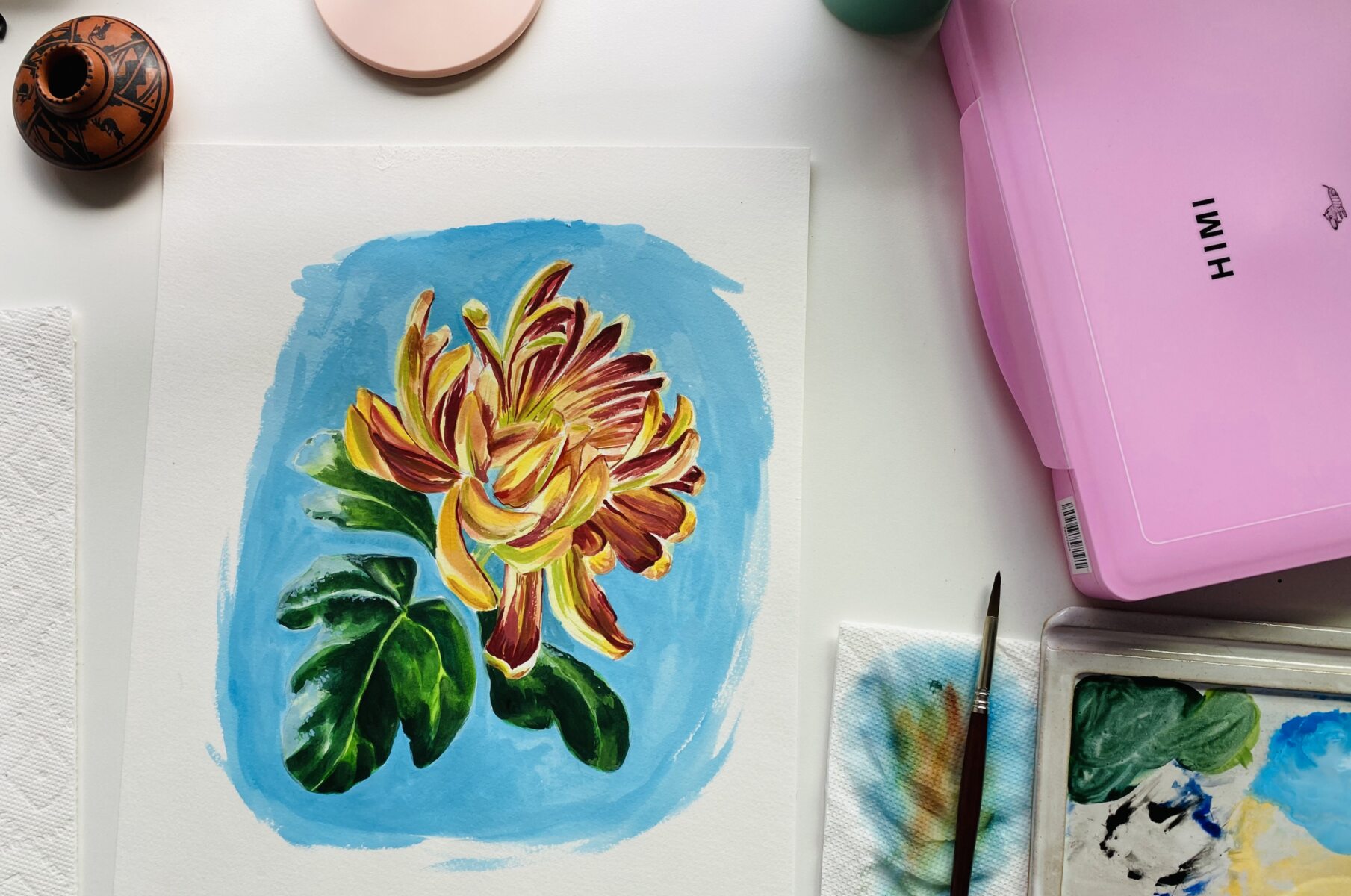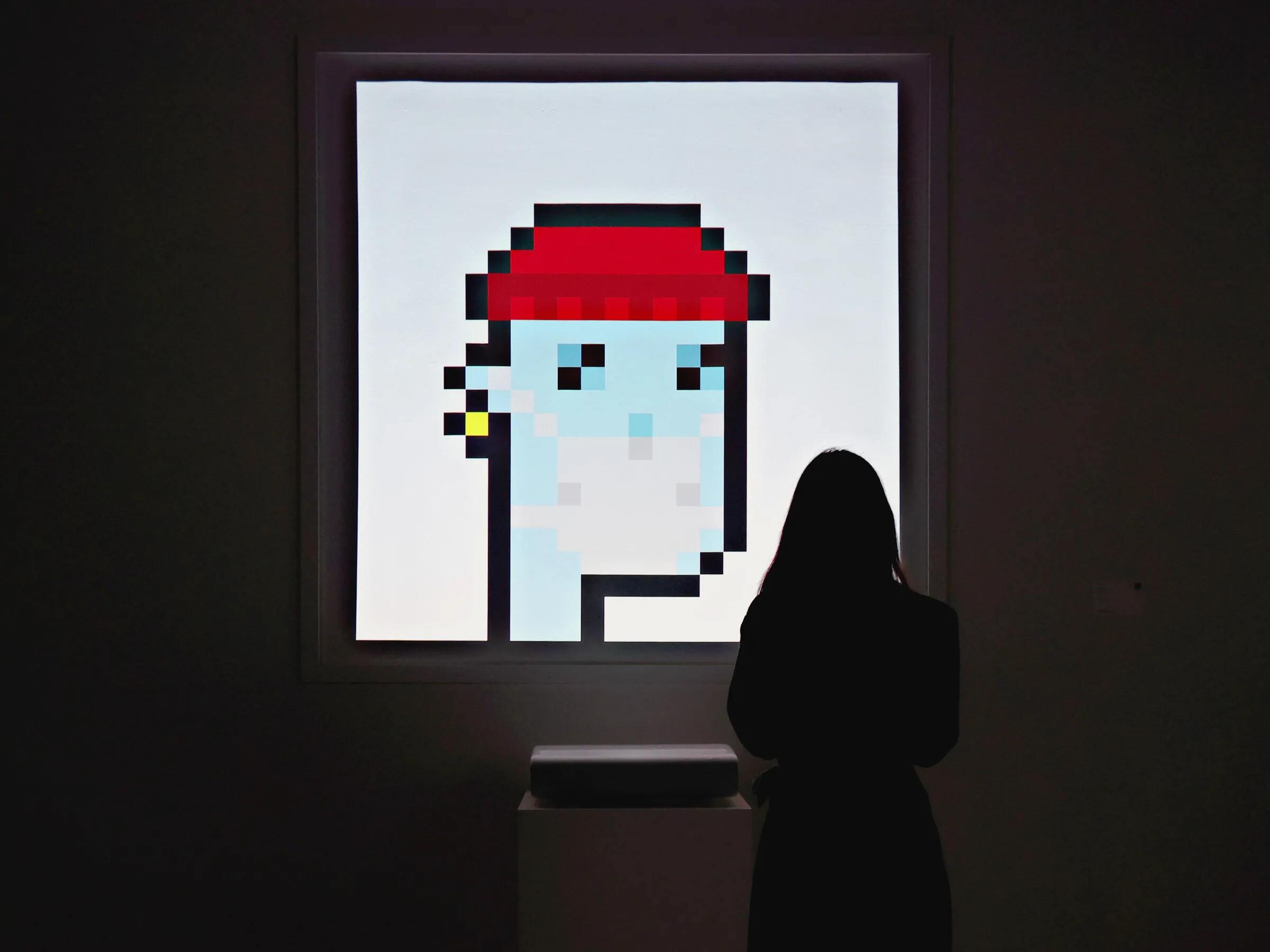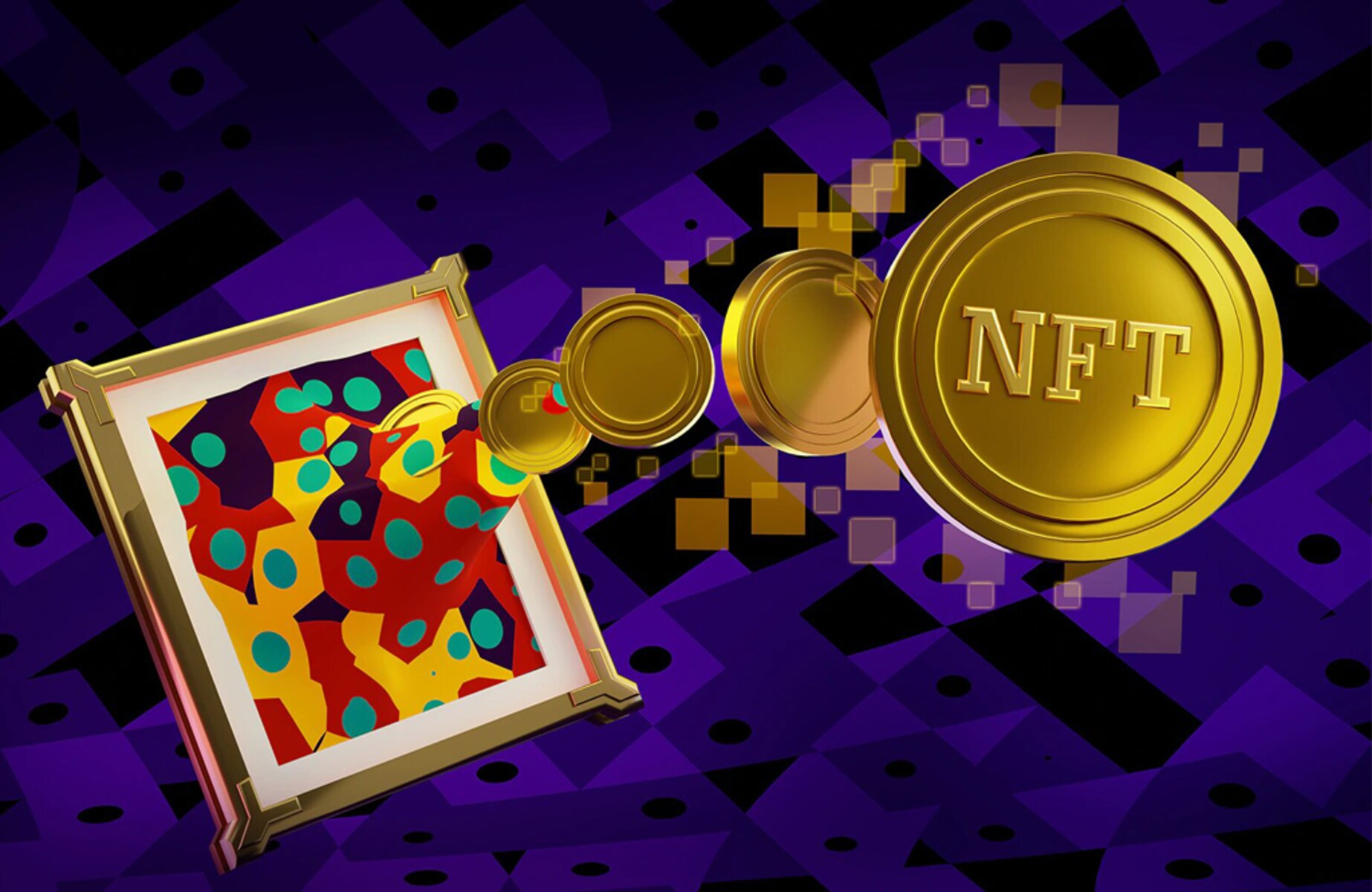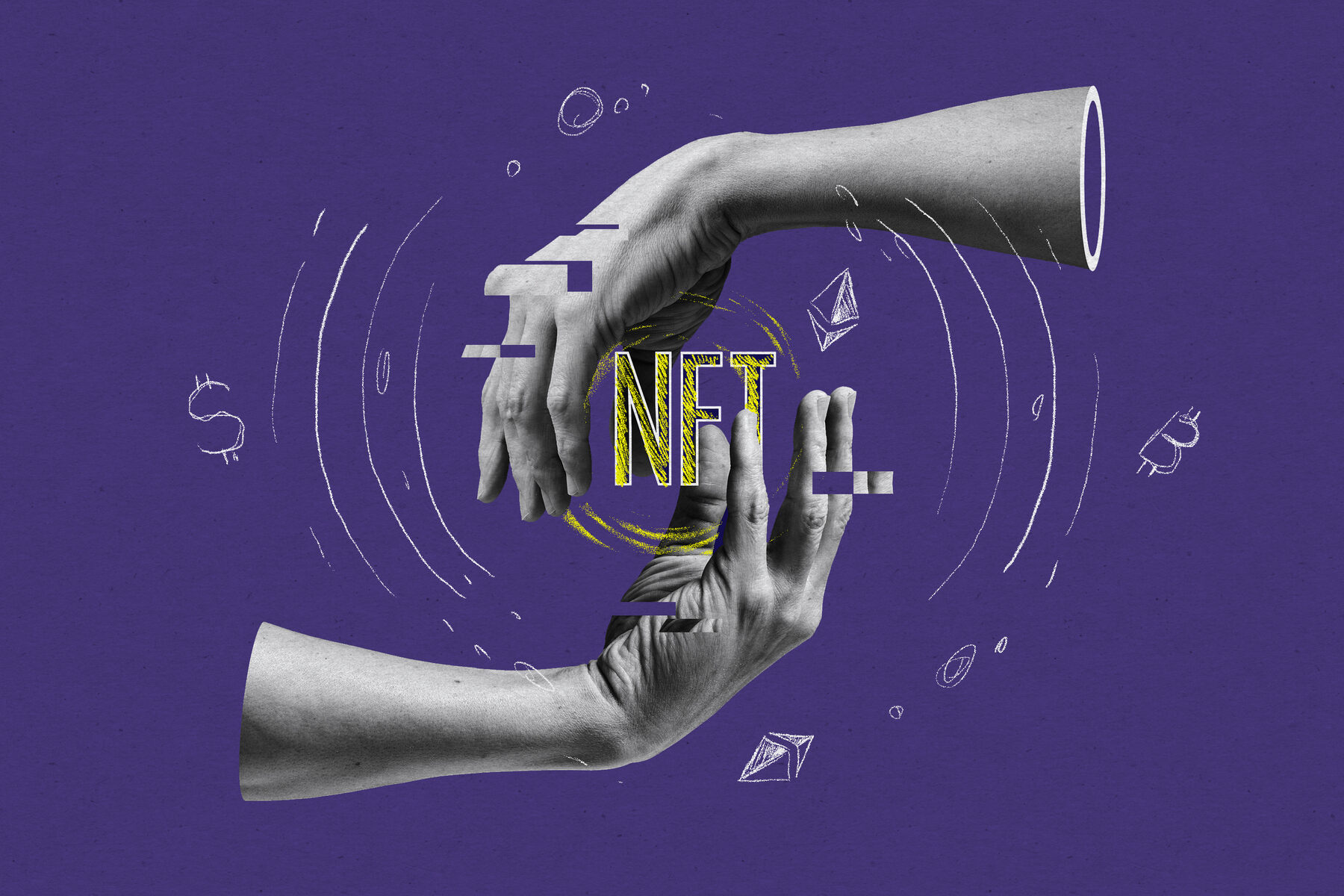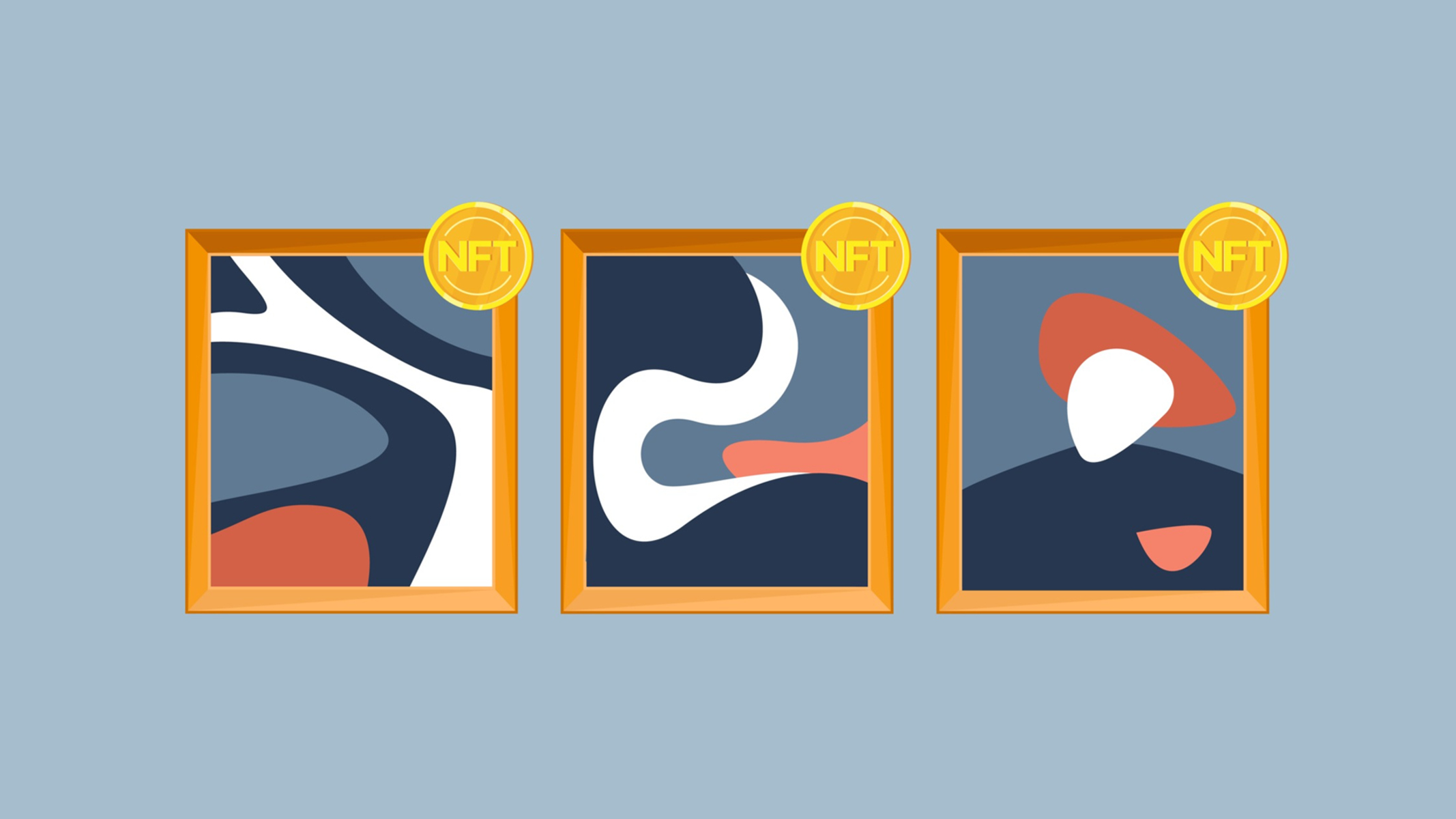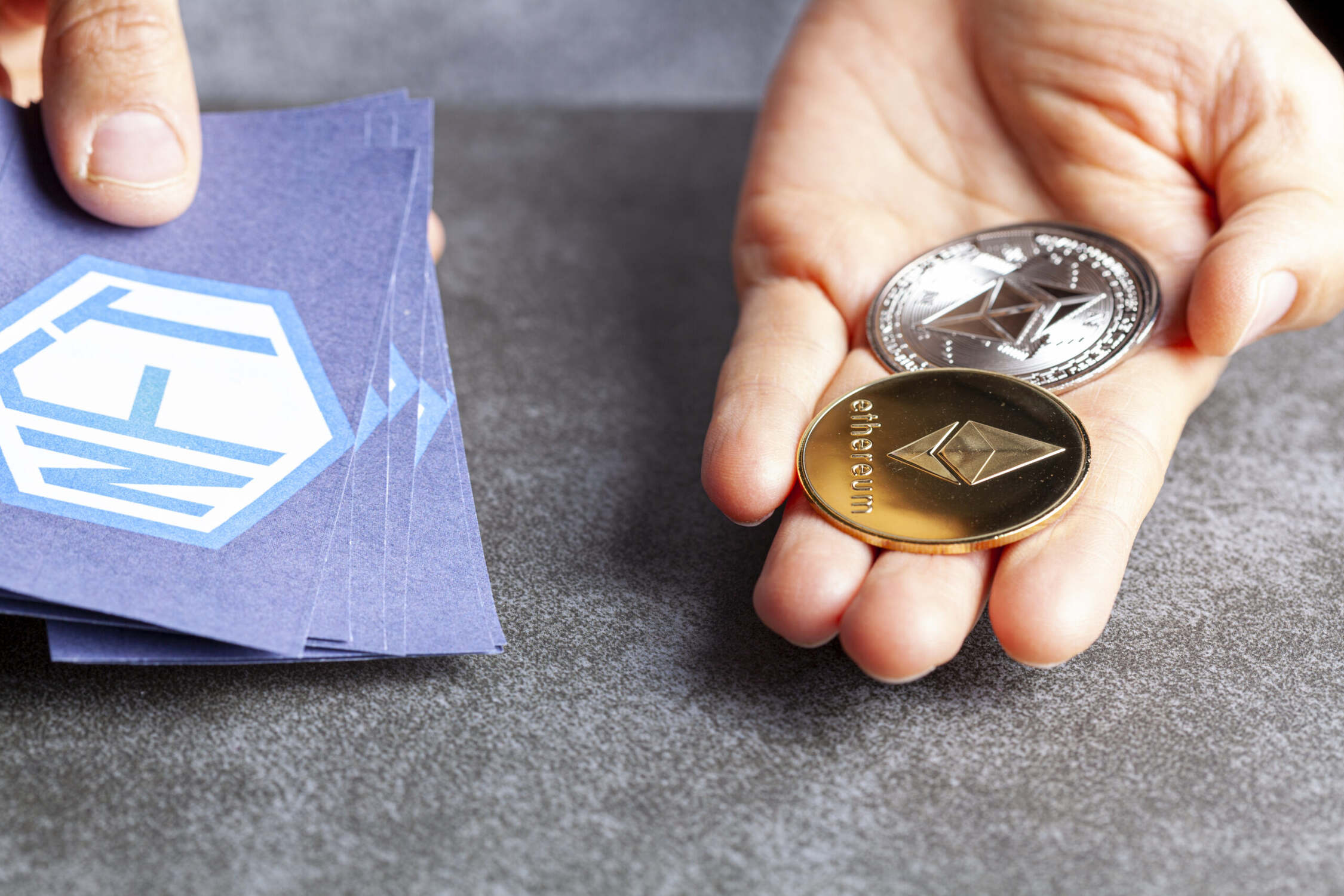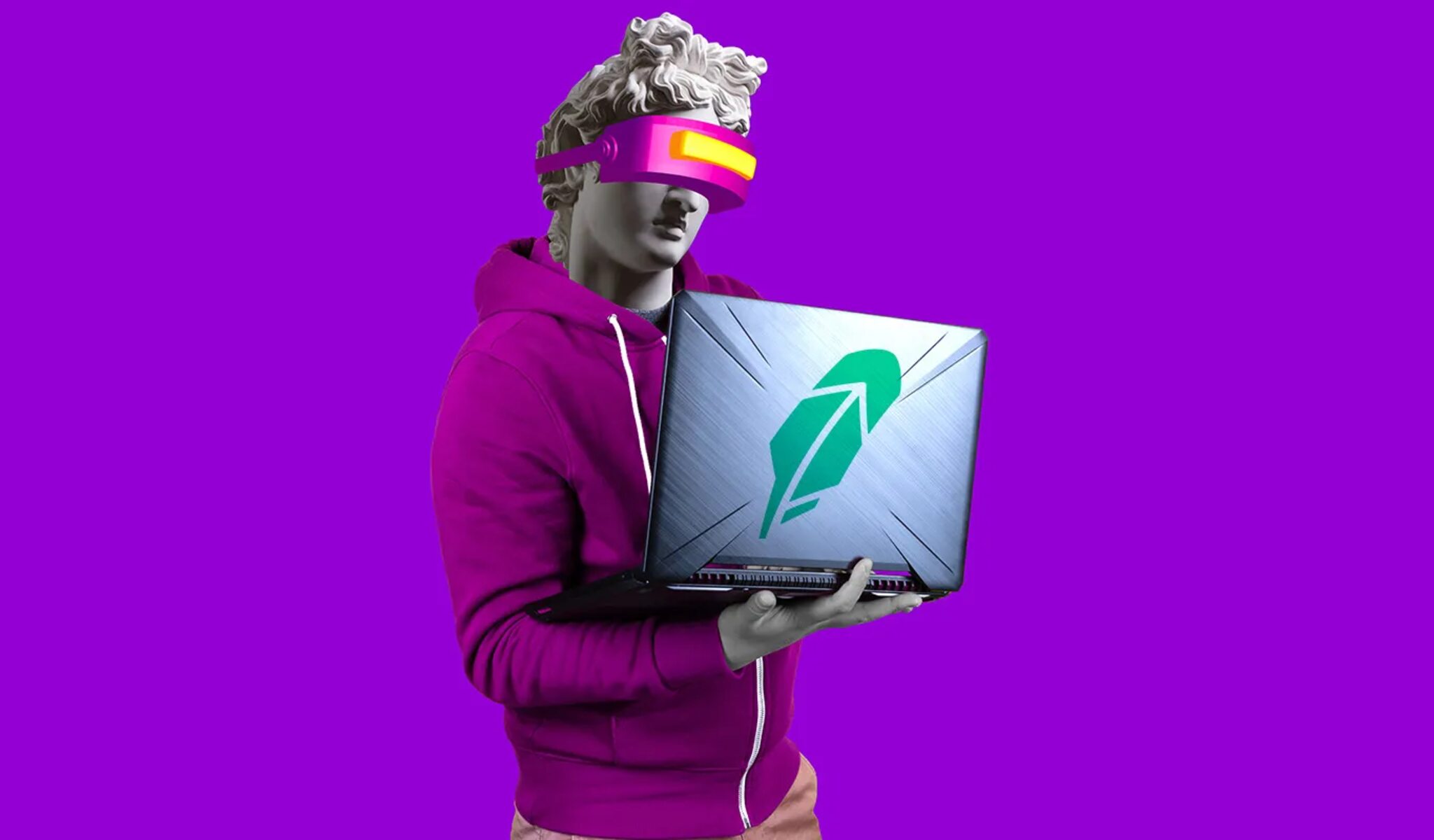What is an NFT?
NFT, short for Non-Fungible Token, has gained significant attention in the digital world recently. Simply put, an NFT represents a unique digital asset that cannot be replicated or replaced. Unlike cryptocurrencies such as Bitcoin or Ethereum, which are fungible and can be exchanged on a like-for-like basis, NFTs are one-of-a-kind tokens.
What makes NFTs truly unique is their ability to authenticate ownership and rarity in the digital realm. Each NFT is backed by blockchain technology, typically utilizing Ethereum’s blockchain, ensuring the provenance and scarcity of the asset. This technology provides artists, creators, and collectors with a new way to authenticate and trade digital goods.
NFTs can represent various types of digital assets, including artwork, music, videos, virtual real estate, virtual goods, and more. By creating a digital representation of these assets, NFTs enable creators to establish ownership, establish scarcity, and monetize their creations in ways that were previously difficult or even impossible in the digital space.
One of the key factors contributing to the popularity of NFTs is their potential for democratizing the art world. Traditional art markets have long been dominated by galleries and auction houses, making it difficult for emerging artists to gain exposure and sell their work. NFTs flip this dynamic by allowing artists to directly connect with their audience, selling their digital creations without gatekeepers or intermediaries.
Additionally, NFTs enable creators to monetize their work not just through the initial sale but also through secondary market transactions. Artists can earn royalties every time their NFT is resold, giving them ongoing revenue and incentivizing them to create more valuable and desirable pieces.
The excitement around NFTs also stems from the digital nature of the assets. As the world becomes increasingly digital, and our interactions, experiences, and purchases shift to online platforms, the ability to own and trade exclusive digital assets becomes more appealing. NFTs allow individuals to collect and showcase their digital possessions in the same way one would display physical art or collectibles.
Overall, NFTs represent a paradigm shift in the way we think about ownership, value, and creativity in the digital age. They offer a new way for artists, creators, and collectors to engage with each other, establish ownership rights, and create a thriving digital marketplace for unique and valuable digital assets.
Understanding the Concept of NFTs
To truly comprehend the concept of NFTs, it’s essential to dive deeper into how they function and what sets them apart from traditional digital assets. NFTs harness the power of blockchain technology to establish ownership, scarcity, and provenance for digital goods.
At the core of NFTs is the concept of indivisibility. Unlike cryptocurrencies that are divisible, such as Bitcoin or Ethereum, NFTs are unique and cannot be broken down into smaller units. Each NFT holds distinct characteristics, metadata, and a digital signature that verifies its authenticity and ownership.
The blockchain technology used by NFTs provides a decentralized and transparent ledger of ownership records. This means that anyone can easily trace the history of an NFT and verify its original creator and subsequent owners. This level of transparency ensures the authenticity and integrity of the asset, making it highly desirable for collectors and investors.
Another crucial aspect of NFTs is their programmability. Smart contracts, which are self-executing agreements running on the blockchain, can be built into NFTs, allowing creators to set rules, royalties, and conditions for the token. This programmability opens up a world of possibilities for creators, enabling them to monetize their work and earn royalties from future sales effortlessly.
The value of an NFT is derived from its uniqueness, scarcity, and demand within the marketplace. The more desirable an NFT is, the higher its value can soar in the market. Collectors and investors are driven by the allure of owning a one-of-a-kind digital asset, which can provide them with a sense of exclusivity and prestige.
It’s worth noting that the concept of owning digital assets is not entirely new. Digital art, music, and virtual goods have existed for years, but the problem of proving ownership, scarcity, and preventing unauthorized duplication has been a significant challenge. NFTs address these issues by providing a decentralized and immutable record of ownership, giving creators and collectors confidence in the authenticity and uniqueness of their digital assets.
While the NFT market has experienced explosive growth and media attention, it’s important to approach it with a critical eye. As with any emerging technology, potential risks and challenges exist, such as environmental concerns surrounding the energy consumption of blockchain networks or the possibility of counterfeit NFTs.
Nonetheless, NFTs have undoubtedly revolutionized how we perceive and interact with digital assets. They have opened up new avenues for creators, empowered individuals to own and trade unique digital goods, and created a vibrant marketplace where value and creativity can thrive.
Step-by-Step Guide to Creating an NFT
If you’re eager to join the world of NFTs and create and sell your unique digital assets, here is a step-by-step guide to help you through the process:
- Educate yourself: Start by gaining a solid understanding of NFTs, blockchain technology, and the different marketplaces available. Research successful NFT projects and learn from their strategies.
- Choose your blockchain: Select the blockchain platform you want to use for creating your NFT. Ethereum is the most commonly used blockchain, but alternatives like Binance Smart Chain and Flow are also gaining popularity.
- Create a digital wallet: Set up a digital wallet that is compatible with the blockchain you have chosen. This wallet will be used to store your NFTs and facilitate transactions.
- Prepare your digital artwork: Create or digitize your artwork to be minted as an NFT. Ensure that the file meets the specifications required by the chosen marketplace.
- Choose an NFT marketplace: Research and select a suitable NFT marketplace to list and sell your creations. Popular options include OpenSea, Rarible, SuperRare, and Foundation. Each platform has its own submission process and fees, so consider these factors before making a decision.
- Mint your NFT: Connect your digital wallet to the chosen marketplace and follow their instructions to mint your NFT. Provide all the necessary information, including the title, description, and any relevant metadata for your artwork.
- Set a price: Determine the price at which you want to sell your NFT. Consider factors such as the market demand, the uniqueness and quality of your artwork, and the fees associated with the marketplace.
- Promote your NFT: Utilize social media platforms, online communities, and your personal network to promote your NFT. Showcase your artwork, share the story behind it, and engage with potential collectors. Building a strong online presence can significantly increase the visibility and value of your NFT.
- Sell your NFT: Once your NFT is listed on the marketplace, interested buyers can make offers or purchase it directly. Stay responsive to inquiries and negotiate any deals that come your way.
- Manage royalties and secondary sales: If your chosen marketplace enables royalty collection, keep track of any secondary sales of your NFT and collect your earned royalties. This can provide a continuous stream of passive income from your artwork.
Remember that the NFT market is fast-paced and evolving, so stay connected with the community, adapt your strategies, and constantly improve your artwork to succeed in this exciting digital landscape.
Choosing the Right NFT Marketplace
When it comes to selling your NFTs, choosing the right marketplace is crucial. There are several factors to consider before selecting the platform that best suits your needs and goals. Here are some key considerations to guide you:
1. Reputation and Popularity: Research the reputation and credibility of different NFT marketplaces. Look for platforms that have established themselves as reputable and trustworthy, with a track record of successful sales and a large user base. Popular marketplaces such as OpenSea, Rarible, and SuperRare are often preferred choices due to their well-established presence in the NFT community.
2. User-Friendliness: Consider the user interface and overall user experience of the marketplace. A user-friendly platform makes it easier for both creators and collectors to navigate, list, and purchase NFTs. Look for intuitive interfaces, clear instructions, and smooth transaction processes.
3. Fees and Costs: Take into account the fees and costs associated with each marketplace. Different platforms have varying fee structures, including listing fees, transaction fees, and gas fees (Ethereum network fees). Understand the fee structure and calculate how it will impact your profits from selling your NFTs.
4. Audience and Niche: Consider the target audience and niche of each marketplace. Some platforms cater to specific types of digital assets, such as art, music, or virtual goods. Understanding the preferences and interests of the platform’s user base can help you align your creations with potential buyers who are most likely to appreciate and purchase your NFTs.
5. Minting and Listing Process: Evaluate the process of minting and listing your NFTs on each marketplace. Look for platforms that offer an easy-to-follow process, swift approval times, and clear guidelines on file formats, metadata, and additional requirements. A streamlined process will save you time and effort when listing your NFTs.
6. Community and Support: Assess the community engagement and support offered by each marketplace. Platforms with active communities and supportive features, such as forums, chat groups, or tutorials, can provide valuable networking opportunities, guidance, and collaboration chances with other creators.
7. Secondary Sales and Royalties: Consider whether the marketplace allows for secondary sales and royalties. Some platforms have built-in royalty mechanisms that enable creators to earn a percentage of future sales of their NFTs. This feature can provide ongoing income and incentives for buyers to support your work.
8. Research and Comparison: Conduct thorough research and compare the pros and cons of different platforms. Take into account the feedback and experiences shared by other creators and users. Join NFT communities and forums to gain insights and advice from experienced individuals in the space.
By considering these aspects and aligning them with your goals and preferences as a creator, you can make an informed decision when choosing the right NFT marketplace to showcase and sell your unique digital assets.
Creating a Digital Artwork for Your NFT
One of the exciting aspects of entering the world of NFTs is the opportunity to showcase and sell your digital artwork. Here’s a step-by-step guide on how to create captivating digital artworks for your NFTs:
1. Find your inspiration: Start by identifying a concept, theme, or emotion that inspires you. Explore different art styles and genres to help narrow down your focus and find a unique artistic direction.
2. Use professional tools: Invest in digital art software or tools that offer a wide range of features and capabilities. Popular options include Adobe Photoshop, Procreate, and Illustrator. These tools provide powerful editing and creation options to bring your vision to life.
3. Experiment with techniques: Explore different digital art techniques, such as raster or vector art, digital painting, photo manipulation, or 3D rendering. Experimenting with various techniques allows you to discover your strengths and develop your own artistic style.
4. Focus on composition and balance: Pay attention to the composition of your artwork. Consider elements such as color, light, shape, and perspective to create visually appealing and balanced compositions. Experiment with different arrangements and experiment with various visual elements to find the perfect balance.
5. Embrace storytelling: Tell a story or evoke an emotion through your artwork. Aspire to create a narrative or capture a moment that resonates with your audience. Engaging storytelling can elevate the value and appeal of your digital art.
6. Incorporate unique and personal elements: Infuse your artwork with your own unique style and personal touch. Consider incorporating elements that reflect your personality, interests, or cultural background. This personal touch adds depth and authenticity to your creations.
7. Pay attention to details: Focus on the finer details of your artwork. Refine your lines, textures, and shading to create a high-quality and polished final piece. Attention to detail enhances the overall impact and professionalism of your digital art.
8. Optimize for digital display: Keep in mind the medium in which your artwork will be displayed – digital screens. Adjust your artwork’s resolution, color profile, and file format accordingly to ensure it looks its best when viewed on different devices.
9. Seek feedback and iterate: Share your digital art with fellow artists, friends, or online communities to gather feedback and constructive criticism. Embrace the opportunity to grow as an artist by learning from others and incorporating their insights into your work.
10. Watermark and protect your artwork: Before minting your artwork as an NFT, consider watermarking it to protect against unauthorized use or infringement. Watermarks can help identify your artwork as an original piece and deter potential theft.
Remember, creating digital art for your NFTs is an exciting and ongoing journey of self-expression. Continuously strive to improve your skills, explore new techniques, and push the boundaries of your creativity to captivate your audience and stand out in the NFT marketplace.
Minting Your NFT
Once you’ve created your digital artwork, the next step is to mint it as an NFT. Minting establishes the unique identity, ownership, and authenticity of your creation on the blockchain. Here’s a step-by-step guide to help you through the process:
1. Select a suitable platform: Choose an NFT marketplace that supports minting on the blockchain of your choice. Popular platforms like OpenSea, Rarible, and Mintable are widely used and offer user-friendly minting processes.
2. Set up your wallet: Create a digital wallet compatible with the chosen blockchain. You’ll need this wallet to store and transact your NFT. Ensure you have a sufficient balance of the blockchain’s native cryptocurrency to cover transaction fees.
3. Prepare your artwork: Make sure your digital artwork is in a suitable file format and adheres to the platform’s specifications. Check the image dimensions, file size, and recommendations for metadata like title, description, and any additional attributes.
4. Connect your wallet: Connect your wallet to the NFT marketplace by linking its public address. This connection enables you to interact with the marketplace and sign transactions securely.
5. Upload and mint: Follow the instructions provided by the marketplace to upload your artwork file. Enter the relevant details, such as title, description, and attributes. Set any desired royalty or commission rates, if applicable. Confirm the transaction to initiate the minting process.
6. Pay the transaction fees: Each blockchain transaction incurs a fee, commonly known as gas fees. These fees cover the computational resources required to process and record your minting transaction on the blockchain. Confirm the payment of the fees from your connected wallet.
7. Await confirmation: Your minting transaction will now be processed, verified, and added to the blockchain. The time this takes can vary depending on network congestion and the blockchain you’re using. Be patient and wait for the confirmation of your minting transaction.
8. Verify and promote your NFT: Once your minting transaction is confirmed, your NFT will have a unique identifier on the blockchain. Review your listing on the marketplace, ensuring that all details and attributes accurately represent your artwork. Share your NFT on social media and relevant communities to promote it to potential buyers.
9. Consider additional features: Many NFT marketplaces offer additional features to enhance your NFT’s appeal, such as creating unlockable content, special editions, or collaborations with other artists. Explore these options to make your NFT more enticing to collectors.
10. Manage and track your NFT: Keep track of your NFT’s performance, views, and sales on the marketplace. Engage with buyers and collectors who show interest in your artwork. Consider participating in auctions, drops, or collaborations to further increase the visibility and value of your NFT.
Minting your NFT is a significant milestone in your journey as an NFT creator. By following these steps and leveraging the opportunities available on NFT marketplaces, you can successfully establish your digital artwork as a unique and valuable asset in the blockchain ecosystem.
Setting a Price for Your NFT
Setting the right price for your NFT is a crucial step in maximizing its value and attracting potential buyers. Here are some considerations to help you determine the optimal price for your digital artwork:
1. Artistic Value: Assess the artistic value of your NFT. Consider factors such as the uniqueness of your artwork, its quality, and the intricacy of the design. Highly detailed and visually captivating pieces often command higher prices.
2. Scarcity: Evaluate the scarcity of your NFT. If your artwork is a limited edition or one-of-a-kind, its value can increase significantly. Collectors often seek scarce or exclusive NFTs, which can drive up demand and justify a higher price.
3. Market Trends: Stay informed about current market trends and price ranges of similar NFTs. Analyze recent sales and the average prices in your niche or category. This research can help you gauge what buyers are willing to pay for artworks with similar attributes.
4. Consider the Costs: Take into account any costs incurred in creating and minting your NFT. Factor in your time, software expenses, the blockchain transaction fees, and the platform’s listing fees. Ensure that the final price covers these costs while still allowing you to earn a fair profit.
5. Reputational Factors: Consider your reputation and the demand for your artwork. If you have an established following or your art has gained recognition, you may have the leverage to set a higher price. However, if you’re starting out or seeking to build a reputation, pricing your NFT competitively may be more advantageous.
6. Collectors’ Perceptions: Understand the perspective of potential buyers and collectors. Determine the value they may assign to your art based on its visual appeal, concept, emotional impact, or alignment with popular trends. Balancing what you believe reflects the value of your work with what your target audience is willing to pay is essential.
7. Incremental Price Strategies: Consider employing an incremental pricing strategy. Some creators start with lower prices for initial sales, aiming to attract early collectors and generate buzz. As demand and recognition increase, they progressively increase the prices for subsequent editions or releases.
8. Flexibility and Negotiation: Be open to negotiating the price of your NFT, especially for potential buyers who express genuine interest. Flexibility in pricing can help facilitate sales and build relationships with collectors. However, it’s essential to strike a balance between your desired price and accommodating serious buyers.
Remember that the NFT market can be dynamic, and trends can change quickly. Regularly reevaluate the pricing strategy for your NFTs based on market feedback, demand, and your evolving reputation as an artist. Continuously refine your pricing approach to ensure that your NFTs are competitively priced and positioned for success in the marketplace.
Promoting and Marketing Your NFT
Creating an exceptional NFT is just the beginning. To maximize its visibility and attract potential buyers, you need to actively promote and market your NFT. Here are some effective strategies to help you get started:
1. Leverage Social Media: Utilize popular social media platforms such as Twitter, Instagram, and TikTok to showcase your NFT. Share images or short videos of your artwork, along with engaging captions and relevant hashtags. Engage with the NFT community, interact with potential buyers, and collaborate with influencers to broaden your reach.
2. Engage in Online Communities: Participate in online forums, Discord groups, Telegram channels, and NFT-specific communities related to your niche or the platforms you’re using. Contribute valuable insights, share your work, and establish yourself as an active and respected member of the community. This engagement can lead to networking opportunities and potential exposure to collectors.
3. Collaborate with Influencers and Creators: Collaborate with popular influencers, artists, or other creators in the NFT space. Cross-promote each other’s work, participate in joint projects, or engage in giveaways and contests. Leveraging the existing following and credibility of influencers can significantly expand your exposure.
4. Create Behind-the-Scenes Content: Share your creative process and behind-the-scenes moments with your audience. This can include videos, live streams, or blog posts that give insights into your inspiration, techniques, and the story behind your artwork. Allowing your audience to connect with you on a personal level can build interest and emotional connection with your NFT.
5. Build an Email List: Create an email list specifically for NFT enthusiasts and collectors. Offer exclusive updates, previews, or early access to new releases to incentivize sign-ups. Regularly engage with your subscribers by sending newsletters or announcements about your latest NFT artwork and ventures.
6. Tap into Influential Publications: Reach out to influential NFT-focused publications, blogs, or media outlets. Pitch your story or artwork to journalists, writers, or podcast hosts who cover the NFT space. Being featured in prominent publications can drive significant exposure and validation for your work.
7. Attend NFT Conferences and Events: Explore opportunities to attend NFT conferences, exhibitions, and virtual events. Network with fellow artists, collectors, and industry professionals. Present your portfolio, participate in panel discussions, or even host workshops to establish yourself as an expert in your field.
8. Offer Limited Editions or Exclusivity: Enhance the appeal of your NFT by creating limited editions or offering exclusive benefits to collectors. This can include additional perks like future collaborations, access to exclusive content, or physical merchandise associated with your NFT. Adding scarcity or unique value creates a sense of exclusivity that can attract avid collectors.
9. Engage with Your Audience: Respond to comments, messages, and inquiries promptly and genuinely. Show appreciation for the support and feedback you receive. Building a loyal community around your artwork can foster repeat customers and word-of-mouth marketing.
10. Stay Consistent: Consistency is key to maintaining a strong presence in the NFT market. Continuously produce high-quality artwork, engage with your audience, and adapt your marketing strategies based on feedback and emerging trends.
By implementing these promotion and marketing strategies, you can significantly enhance the visibility and desirability of your NFTs. Remember to stay authentic, engage with the community, and leverage various channels to create a strong brand presence in the NFT ecosystem.
Selling Your NFT
After creating and promoting your NFT, the ultimate goal is to sell it to a collector who values your artwork. Here are some key steps to help you successfully sell your NFT:
1. Optimize your Listing: Ensure that your NFT listing on the marketplace is visually appealing and provides relevant information. Use high-quality images, write a captivating description, and include any unique attributes or features of your artwork that make it stand out.
2. Set a Competitive Price: Determine a fair and competitive price based on factors such as the artistic value, market demand, scarcity, and your reputation as an artist. Research similar artworks and recent sales to gauge appropriate pricing for your NFT.
3. Utilize Auctions or Fixed Price Options: Choose whether to sell your NFT through an auction-style listing or a fixed price. Auctions can create excitement and competition, potentially driving prices higher. Fixed price listings, on the other hand, provide a straightforward and immediate buying option.
4. Engage with Potential Buyers: Respond promptly to inquiries and engage with potential buyers who show interest in your artwork. Answer questions, provide additional information, and address any concerns they may have. Building a rapport and trust with potential buyers can increase the likelihood of selling your NFT.
5. Consider Accepting Cryptocurrency: Most NFT transactions are conducted using cryptocurrencies like Ethereum (ETH). Be prepared to accept cryptocurrency as a form of payment and familiarize yourself with the necessary steps to complete the transaction securely.
6. Time Your Listing: Consider the timing of your NFT listing. Research market trends and events that may impact buyer sentiment. Launching your listing during a relevant event or when demand is high can increase visibility and potential sales.
7. Leverage Social Media and Marketing Channels: Continue promoting your NFT on social media platforms, online communities, and other marketing channels even after the initial listing. Share updates, highlight features, and encourage followers to spread the word about your artwork.
8. Collaborate with Influencers: Explore collaborations with influencers, artists, or collectors who have a significant following and influence in the NFT community. Partnering with them to promote your NFT can expose your artwork to a broader audience and increase your chances of a successful sale.
9. Offer Limited Time Promotions: Create a sense of urgency by offering limited-time promotions or discounts for your NFT. This can incentivize potential buyers to take action quickly, enhancing the sense of exclusivity and value associated with your artwork.
10. Maintain Transparency and Professionalism: Be transparent about the terms and conditions of the sale, including any rights or limitations associated with the purchase of your NFT. Conduct transactions professionally and consistently communicate with buyers to ensure a smooth and satisfactory experience.
Remember that selling an NFT may require patience and perseverance. Stay engaged with the market, adapt your strategies based on feedback and market trends, and continue creating exceptional artwork to attract collectors and maximize the potential for successful NFT sales.
Understanding NFT Royalties and Secondary Sales
One of the unique features of NFTs is the ability for creators to earn royalties and participate in the profits from secondary sales. Here’s a closer look at how NFT royalties and secondary sales work:
What are NFT royalties?
NFT royalties are a mechanism that allows creators to earn a percentage of the sale price each time their NFT is resold on the marketplace. This ensures ongoing compensation for the original creator even as the NFT changes hands in subsequent transactions. Royalties are typically set as a percentage of the sale price, and the amount is automatically transferred to the creator’s digital wallet upon each resale.
How do NFT royalties benefit creators?
By earning royalties from secondary sales, creators can unlock a continuous revenue stream from their work. This incentivizes artists, musicians, and other content creators to continue producing new and valuable NFTs. It also provides a source of income even if the initial sale of the NFT did not reach its full potential. NFT royalties can be a game-changer for artists, providing them with ongoing financial support and recognition for their contributions to the NFT marketplace.
How do secondary sales work?
Secondary sales refer to any subsequent transactions of an NFT after the initial purchase from the creator. Once the NFT is sold, the buyer has the option to sell it to another collector at a higher price. These secondary sales enable the NFT market to flourish and evolve as buyers trade and speculate on the value of digital assets. With each secondary sale, the creator is entitled to receive the predetermined royalty percentage, as specified in the NFT smart contract.
Marketplaces and royalties:
Not all NFT marketplaces support royalties, so it’s essential to choose a platform that enables royalty collection. Some marketplaces automatically calculate and distribute royalties to creators upon each resale, while others require manual coordination between buyers and sellers to honor the agreed-upon royalty terms.
The importance of royalties in the NFT ecosystem:
NFT royalties play a significant role in the growth and sustainability of the NFT market. They provide an ongoing incentive for creators to continue producing valuable and desirable NFTs. Moreover, they foster a sense of fairness and recognition for artists, allowing them to benefit from the increased value and demand for their work in the secondary market.
Legal considerations:
As the evolving NFT space continues to develop, legal considerations surrounding royalties and intellectual property rights are becoming increasingly important. Understanding the legal aspects of royalty agreements and intellectual property licensing is essential for creators and buyers to ensure a fair and legally compliant marketplace.
In summary, NFT royalties and secondary sales revolutionize the way artists are compensated in the digital art marketplace. By providing ongoing royalty payments to creators, NFTs introduce a fair and transparent system that recognizes the ongoing value and contribution of artists in the vibrant NFT ecosystem.
Tips for Success in the NFT Market
Entering the NFT market can be an exciting and rewarding experience as a creator. To increase your chances of success and stand out in this competitive landscape, consider the following tips:
1. Research and Educate Yourself: Stay informed about the latest trends, marketplaces, and technologies in the NFT space. Understand the underlying blockchain technology and smart contract functionality. Research successful NFT projects and learn from the strategies employed by top artists and creators.
2. Focus on Quality and Uniqueness: Create high-quality and unique NFTs that stand out from the crowd. Pay attention to detail, invest time in refining your artwork, and develop a distinct artistic style. Originality and quality are key factors that can attract collectors and differentiate your work from others.
3. Engage with the Community: Participate actively in NFT communities, social media platforms, and online forums. Engage with fellow artists, collectors, and industry influencers. Network, share your knowledge, and collaborate with others to expand your reach and build valuable connections.
4. Leverage Social Media and Marketing: Utilize various social media platforms to showcase and promote your NFTs. Build a strong online presence by consistently sharing your artwork, engaging with followers, and utilizing relevant hashtags. Collaborate with influencers or participate in community-driven events to amplify your visibility.
5. Experiment with Different Marketplaces: Explore different NFT marketplaces to diversify your exposure and increase your chances of selling your artwork. Each marketplace has its own unique features, user base, and community. Experiment with different platforms to find the ones that align best with your artistic niche and target audience.
6. Mint Limited Editions and Collections: Create a sense of scarcity and exclusivity by minting limited editions or releasing curated collections of your NFTs. Limited supply can increase demand and drive up the perceived value of your artwork.
7. Engage with Your Collectors: Value your collectors and engage with them on a personal level. Respond to inquiries, provide updates, and show appreciation for their support. Building a community around your artwork can lead to repeat buyers and word-of-mouth referrals.
8. Collaborate with Other Artists: Collaborations with other artists can bring fresh perspectives and expand your reach. Partner with fellow creators for joint projects, limited edition releases, or cross-promotions. Such collaborations can attract a wider audience and expose your work to new collectors.
9. Stay Consistent and Persistent: Success in the NFT market may take time, so it’s important to stay determined and persistent. Continuously create and release new artwork, refine your skills, and adapt your strategies based on market feedback. Consistency and perseverance are key to building a sustainable career in the NFT space.
10. Embrace the Evolving Nature of NFTs: Be adaptable and open-minded as the NFT market and technology evolve. Embrace new trends, experiment with emerging platforms, and consider innovative ways to present your art, such as incorporating virtual reality or augmented reality elements. Being flexible and willing to evolve with the market can help you stay ahead.
By following these tips, you can increase your chances of success in the dynamic and ever-evolving NFT market. Remember to keep learning, experimenting, and staying true to your artistic vision. With persistence and dedication, your NFT journey can become a rewarding and fulfilling experience.
Conclusion
The world of NFTs offers a unique opportunity for artists and creators to showcase, sell, and monetize their digital assets. Understanding the concept of NFTs and the intricacies involved in creating, marketing, and selling them is essential for success in this rapidly growing market.
Through this guide, we have explored various aspects of the NFT ecosystem, including what NFTs are, the steps involved in creating and minting an NFT, choosing the right marketplace, promoting and marketing your NFT, setting a price, and understanding royalties and secondary sales.
To thrive in the NFT market, it’s crucial to stay informed about market trends, engage with the community, and create high-quality and unique digital artwork. Leveraging social media platforms, collaborating with influencers, and exploring different marketplaces can help expand your reach and attract potential buyers.
Furthermore, considering factors such as scarcity, market demand, pricing strategies, and legal implications can contribute to your overall success as an NFT creator. Engaging with your audience, building a loyal community, and staying persistent in your efforts are vital elements that can drive your NFT career forward.
Remember, the NFT market is dynamic and constantly evolving. It is essential to adapt, embrace new technologies, and remain open to new possibilities. By continuously honing your skills, keeping up with market trends, and nourishing your artistic vision, you can navigate the exciting world of NFTs and position yourself for long-term success.







